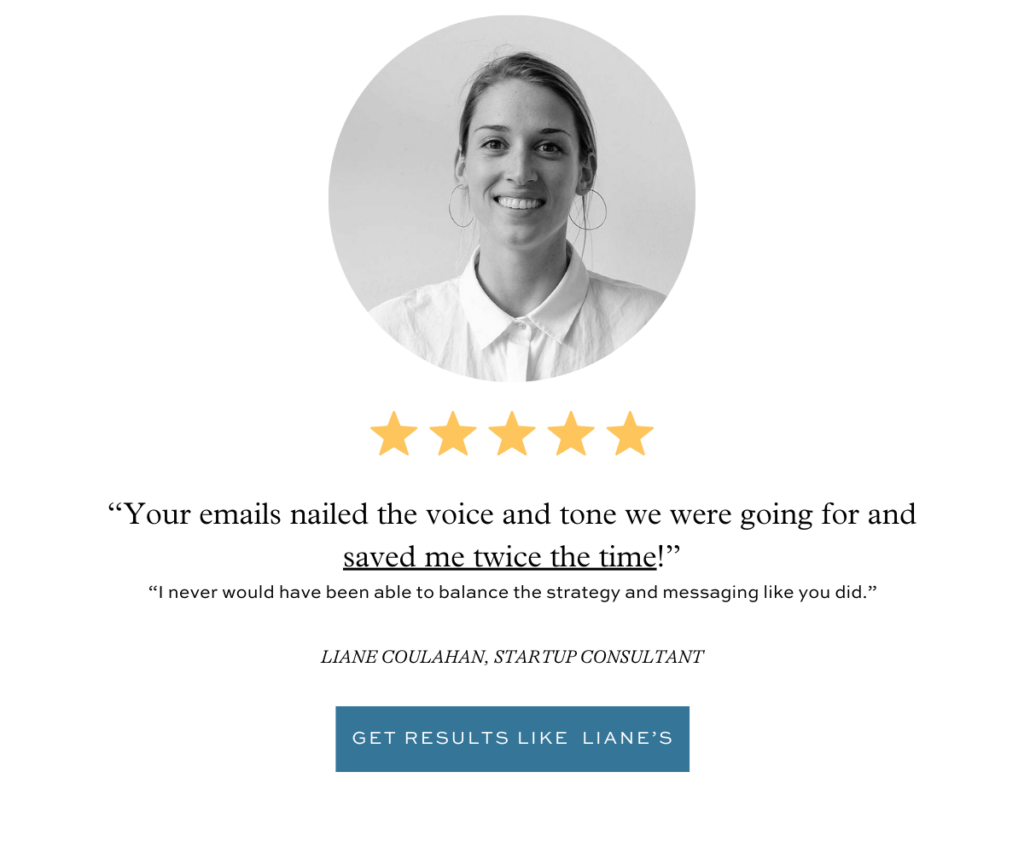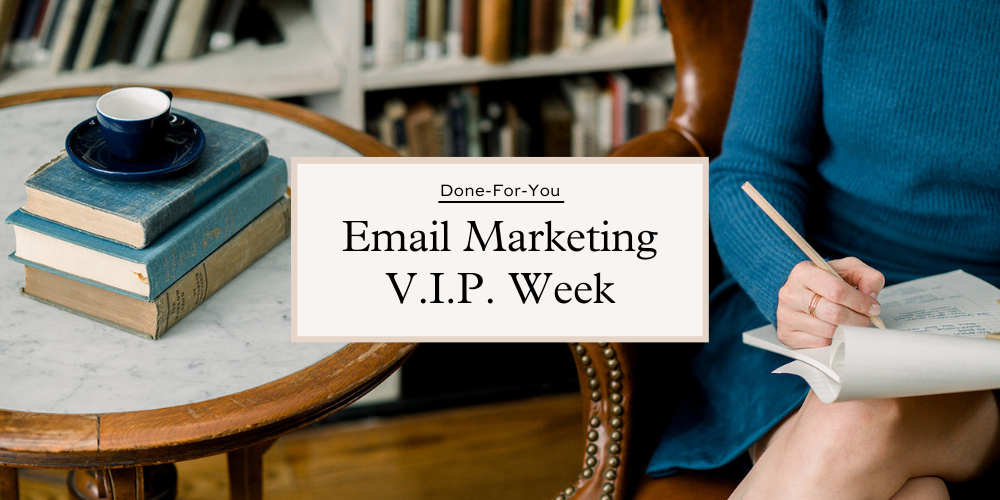Unlike social media platforms where your content’s visibility is at the mercy of the algorithm, you have almost complete control over your email marketing.
You control the timing and frequency of your emails. You get to decide what type of content to present to your subscribers. You control the branding, the messaging, and who gets which emails.
But none of this matters if people don’t open your emails.
Creating emails people love to read is not about boosting outward-facing vanity metrics. It’s about seizing the opportunity to foster genuine relationships with subscribers who have voluntarily opted in to hear what you have to offer.
Creating a compelling subject line is the most critical part of your email copywriting strategy. Sixty-four percent of recipients decide to open or delete emails based on your subject lines alone.
But there are other factors that go beyond the subject line to consider. ↴
(Source: Hubspot)
How to earn your place in an overflowing inbox.
Pick a lane, then make your content relevant and valuable
A sales funnel serves a different purpose than an email newsletter. If you prompted readers to opt-in for helpful tips and resources, but your emails are really sales emails pretending to be useful content, readers will smash that unsubscribe button and avoid your brand like the plague.
Decide the role your email list will play in your business.
Will it be 75% education/updates and 25% sales? 80% sales and 20% nurture?
Are you hoping to foster community, provide goodwill, or nurture potential clients or customers?
Based on your choice, brainstorm your ideal audience’s needs, pain points, and interests, and then build out an email content strategy to match.
And for the love of Pete… ⏬
Engage outside of sales cycles
Even if you’re running regular sales campaigns, you need to continue to provide value in between launches if you want to keep people on your list and funneling through your programs.
No one signs up for an email list because they want to be sold to. They sign up because value was offered in exchange for their email address.
But your readers are intelligent human beings who know the game. If you treat them like a sale waiting to happen, that ick will be felt on the other side of the screen.
When you’re not in active sales mode, share informative articles, updates, or tools. Ask for feedback or send out a survey showing you value their opinion. If you’re an e-commerce or product business, celebrate anniversaries, birthdays, or special holidays.
Avoid soft pitching someone else’s program that you *conveniently* happen to be an affiliate for. That counts as a sales drive.
This is your moment to serve your people, not take from them.
Stick to a send cycle that works for you.
Every guru and their mother will tell you you should aim to email your audience no less than once a week to stay top of mind.
But I respectfully disagree.
Your cadence depends on your business, team size, capabilities, and resources.
Here’s your permission slip to engage with your subscribers on a consistent timeline of your choice.
I’m a copywriting business of one who not only handles my own marketing and copy/content writing, I also write entire websites, email and launch sequences, and sales pages for other businesses too.
I’m very busy serving my clients and you probably are too. If an email newsletter once a week is too much, try bi-weekly or monthly but commit to it.
Keeping a consistent cadence your audience can anticipate is better than burning out and ghosting your list for six months or producing crappy content for the sake of fulfilling a deadline.
Keep your list clean
Cold subscribers (people who haven’t opened or engaged with your emails over the past 90+ days) not only cost you money, but they can also affect your deliverability rate. Internet service providers (ISPs) use bounce rates to determine an email sender’s reputation. Sending emails to too many addresses that bounce back sends a red flag to your ISP and you risk ending up in spam.
Removing cold subscribers helps increase your open rates and reduce bounce rates—but don’t start deleting subscribers willy-nilly.
Use this 3-part Cold Subscriber Sequence to give your readers a chance to re-engage with your content or say goodbye forever. Plus, I outline a couple of must-dos before hitting the delete button to ensure you’ve backed up your cold subscriber data for your records.
Segment and personalize your emails
Most email marketing platforms like ConvertKit have a built-in personalization feature or shortcode that automatically pulls a subscriber’s first name into the email copy as you like. This instantly makes your readers feel like they’re receiving an email from a friend. Just be sure to insert personalization where you would in a natural conversation or it feels schticky.
If you’re ready to take personalization to the next level, segmenting your audience, or grouping and tagging them based on their interests, business type, products purchased, or demographics, gives you the ability to send different types of content to different groups of people.
The more relevant your content is to your subscriber’s life and needs, the more likely they are to read, engage, and click through your emails. This also trains people to know what they can expect when they see your name pop into their inbox.
This is particularly helpful if you have two different audiences such as people looking for DIY solutions vs. Done-For-You services.
Segmentation also lets subscribers choose if they want to receive some emails from you, but not others. When you give readers the option to opt out of certain communications you gain their trust and earn credibility.
Use imagery…seriously
Image-heavy emails can land you in the spam folder, but when used carefully they can help with brand association. GIFs are often used to entertain readers or convey an emotion visually, but using aligned brand imagery helps your readers assign a face or vibe to your name.
Think of all the emails you receive in a week. Are you more likely to recall the businesses that use brand imagery (banners, product shots, headshots) or the businesses that send wall-of-text-only emails?
I can’t tell you the number of times I’ve received an email and had no idea why I signed up for their list. But when there is an image or some sort of recognizable brand imagery I remember: “Oh, yes. I bought their Pinterest templates. Those were great. I wonder what they have to say. Oh, cool, tips all about organizing my Canva account. What a helpful explainer graphic. I need organizational help. I’ll add them to my newsletters file—I’m looking forward to the next tip!”
Writing emails people love to open, is about writing content people want to read.
Crafting emails people want to read leads to meaningful interactions that benefit both the recipient and the sender. Done well, your email marketing strategy and content can keep you top of mind, give you an edge over your competitors, and turn one-time buyers into repeat customers.
The next time you’re wondering how you can improve your email content, review the following email marketing best practices:
- Pick a lane, then make your content relevant and valuable
- Engage outside of sales cycles
- Stick to a send cycle that works for you.
- Keep your list clean
- Segment and personalize your emails
- Use imagery…seriously
Wish your email marketing could be Done-For-You?
Your wish is my command.
Get clear on your email marketing goals, opt-in, and newsletter content strategy, and let me knock out one of your email sequences.
You know email marketing has the highest ROI compared to any other marketing activity ($41 for every dollar spent, to be precise) but you need someone to help you kick it into high gear. I’ll not only help you figure out the best email strategy for your business but I’ll (re)write your lead-gen and nurture sequences so they can run on auto while you focus on serving your people.
Things we’ll knock out in a week:
- EMAIL MARKETING STRATEGY & OUTLINE
- LEAD MAGNET STRATEGY & OUTLINE
- NEWSLETTER CONTENT STRATEGY & TEMPLATE OUTLINE
- BRAND VOICE ASESSMENT
- ONE COPYWRITTEN EMAIL SEQUENCE (3-5 EMAILS)


